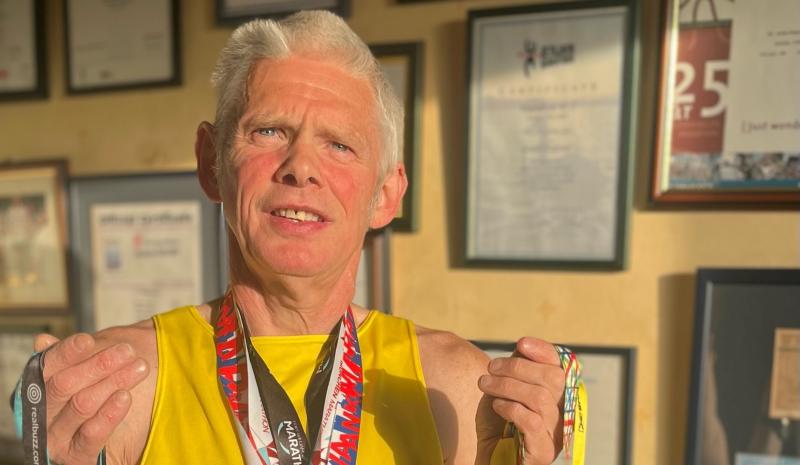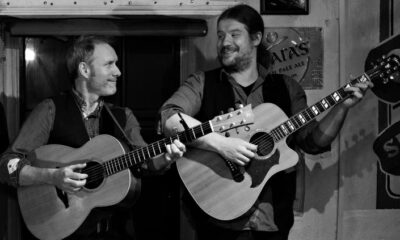News
Blue economy can help take us out of the red

The country’s marine economy could create more than 29,000 jobs and contribute an additional €2.7 billion in growth by 2020, according to a team of experts at NUI Galway.
Research published last week identifies the potential for the so-called ‘blue economy’ to employ an additional 16,000 people directly – with a further 13,000 supported across the wider economy.
Marine Minister Simon Coveney revealed the projections at a major conference in his native Cork on Friday as part of Ireland’s national maritime festival ‘SeaFest’.
The report, compiled by NUI Galway’s Socio-Economic Marine Research Unit (SEMRU) and Teagasc, estimates that the sector contributed an estimated €1.4bn to GDP last year.
Ireland’s ‘Blue Economy’ is performing on average better than the general economy with up to nine per cent growth over the last five years.
With an estimated turnover of €4.5bn, the sector employs approximately 18,500 full-time equivalents and new data from shows that in addition to the direct impacts of Ireland’s ocean economy, a further 13,000 are employed across the wider economy providing an additional €3.3bn in turnover.
This is the third report on Ireland’s Ocean Economy from NUI Galway’s SEMRU as part of its ongoing process of collection and analysis of marine socio-economic data in Ireland funded by the Marine Institute.
Based in the College of Business, Public Policy and Law at NUIG, SEMRU conducts research in a variety of marine related issues. The main research focus of the unit is on the economic importance of coastal and off-shore marine environments.
Results from the report show trends in Ireland’s Ocean Economy over the period 2010-2012 and provides an estimate of the direct value in 2014.
“Over the past few years we’ve seen a dramatic and in some cases radical transformation in Ireland’s attitude towards the marine sector generally, with the marine now being viewed as a significant contributor to our economic recovery,” said the Minister.
“This new data from SEMRU and Teagasc shows that Ireland’s blue economy is performing well in established industries such as seafood, shipping and marine tourism, and is excelling in emerging industries such as high-tech marine products and services, marine biotechnology and maritime commerce,” he added.
The report shows that the ocean economy had a turnover of €4.2 billion in 2012, rising to an estimated €4.5bn in 2014. Itprovided employment for 17,425 individuals Full Time Equivalents, (FTEs) in 2012, with an estimated increase to 18,480 in 2014.
Over the period 2010-2012 a 33% increase in turnover is reported, a further increase of 7% is estimated for the period up to 2014. Employment has also steadily risen, with increase of 5-6%.
Latest figures also suggest that our ‘blue economy’ is performing on average better than the general economy
“Results are encouraging; they reflect the economic recovery that Ireland has experienced in the past few years,” said Dr Stephen Hynes of SEMRU.
“With the recognition of the potential impact of ‘Blue Growth’ on employment and output, at both a national and EU level, there has never been a greater need for reliable statistics on marine sector activity.
“Also, it is only by examining the ocean-dependent economy separately from the national economy that we will be able to understand the magnitude of what might be affected by future changes in the oceans and along our coasts,” he added.
Harnessing Our Ocean Wealth Strategy outlines a number of specific targets which seek to expand the Irish Marine Sector to a total of €6.4bn in 2020 representing an increase of €3.2bn on 2010.
It is estimated that the achievement of these targets will also have additional “knock-on” economic impacts with additional growth of €2.7bn anticipated in the wider economy.
Based on the results of running this scenario through the Bio-Economy IO model, it is estimated that 29,300 new jobs could be created if the Ocean Wealth targets are achieved with 16,100 of these coming directly from within the Marine sector itself.
An additional 13,200 jobs are estimated to be created indirectly through increases in demand for products and services required by the marine sector.
The full report is available to download online at www.nuigalway.ie/semru/publications.html and www.ouroceanwealth.ie
Connacht Tribune
West has lower cancer survival rates than rest

Significant state investment is required to address ‘shocking’ inequalities that leave cancer patients in the West at greater risk of succumbing to the disease.
A meeting of Regional Health Forum West heard that survival rates for breast, lung and colorectal cancers than the national average, and with the most deprived quintile of the population, the West’s residents faced poorer outcomes from a cancer diagnosis.
For breast cancer patients, the five-year survival rate was 80% in the West versus 85% nationally; for lung cancer patients it was 16.7% in the west against a 19.5% national survival rate; and in the West’s colorectal cancer patients, there was a 62.6% survival rate where the national average was 63.1%.
These startling statistics were provided in answer to a question from Ballinasloe-based Cllr Evelyn Parsons (Ind) who said it was yet another reminder that cancer treatment infrastructure in the West was in dire need of improvement.
“The situation is pretty stark. In the Western Regional Health Forum area, we have the highest incidence of deprivation and the highest health inequalities because of that – we have the highest incidences of cancer nationally because of that,” said Cllr Parsons, who is also a general practitioner.
In details provided by CEO of Saolta Health Care Group, which operates Galway’s hospitals, it was stated that a number of factors were impacting on patient outcomes.
Get the full story in this week’s Connacht Tribune, on sale in shops now, or you can download the digital edition from www.connachttribune.ie. You can also download our Connacht Tribune App from Apple’s App Store or get the Android Version from Google Play.
Connacht Tribune
Marathon Man plans to call a halt – but not before he hits 160 races

On the eve of completing his 150th marathon, an odyssey that has taken him across 53 countries, Loughrea’s Marathon Man has announced that he is planning to hang up his running shoes.
But not before Jarlath Fitzgerald completes another ten races, making it 160 marathons on the occasion of his 60th birthday.
“I want to draw the line in 2026. I turn 57 in October and when I reach 60 it’s the finishing line. The longer races are taking it out of me. I did 20 miles there two weeks ago and didn’t feel good. It’s getting harder,” he reveals.
“I’ve arthritis in both hips and there’s wear and tear in the knees.”
We speak as he is about to head out for a run before his shift in Supervalu Loughrea. Despite his physical complaints, he still clocks up 30 miles every second week and generally runs four days a week.
Jarlath receives injections to his left hip to keep the pain at bay while running on the road.
To give his joints a break, during the winter he runs cross country and often does a five-mile trek around Kylebrack Wood.
He is planning on running his 150th marathon in Cork on June 4, where a group of 20 made up of work colleagues, friends and running mates from Loughrea Athletics Club will join him.
Some are doing the 10k, others are doing the half marathon, but all will be there on the finishing line to cheer him on in the phenomenal achievement.
Get the full story in this week’s Connacht Tribune, on sale in shops now, or you can download the digital edition from www.connachttribune.ie. You can also download our Connacht Tribune App from Apple’s App Store or get the Android Version from Google Play.
CITY TRIBUNE
Galway ‘masterplan’ needed to tackle housing and transport crises

From the Galway City Tribune – An impassioned plea for a ‘masterplan’ that would guide Galway City into the future has been made in the Dáil. Galway West TD Catherine Connolly stated this week that there needed to be an all-inclusive approach with “vision and leadership” in order to build a sustainable city.
Deputy Connolly spoke at length at the crisis surrounding traffic and housing in Galway city and said that not all of the blame could be laid at the door of the local authority.
She said that her preference would be the provision of light rail as the main form of public transport, but that this would have to be driven by the government.
“I sat on the local council for 17 years and despaired at all of the solutions going down one road, metaphorically and literally. In 2005 we put Park & Ride into the development plan, but that has not been rolled out. A 2016 transport strategy was outdated at the time and still has not been updated.
“Due to the housing crisis in the city, a task force was set up in 2019. Not a single report or analysis has been published on the cause of the crisis,” added Deputy Connolly.
She then referred to a report from the Land Development Agency (LDA) that identified lands suitable for the provision of housing. But she said that two-thirds of these had significant problems and a large portion was in Merlin Park University Hospital which, she said, would never have housing built on it.
In response, Minister Simon Harris spoke of the continuing job investment in the city and also in higher education, which is his portfolio.
But turning his attention to traffic congestion, he accepted that there were “real issues” when it came to transport, mobility and accessibility around Galway.
“We share the view that we need a Park & Ride facility and I understand there are also Bus Connects plans.
“I also suggest that the City Council reflect on her comments. I am proud to be in a Government that is providing unparalleled levels of investment to local authorities and unparalleled opportunities for local authorities to draw down,” he said.
Then Minister Harris referred to the controversial Galway City Outer Ring Road which he said was “struck down by An Bord Pleanála”, despite a lot of energy having been put into that project.
However, Deputy Connolly picked up on this and pointed out that An Bord Pleanála did not say ‘No’ to the ring road.
“The High Court said ‘No’ to the ring road because An Bord Pleanála acknowledged it failed utterly to consider climate change and our climate change obligations.
“That tells us something about An Bord Pleanála and the management that submitted such a plan.”
In the end, Minister Harris agreed that there needed to be a masterplan for Galway City.
“I suggest it is for the local authority to come up with a vision and then work with the Government to try to fund and implement that.”















